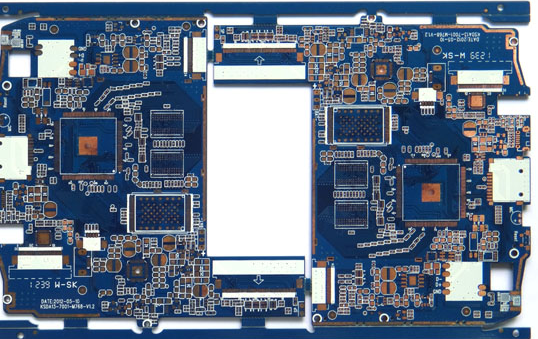The continuous development of electronic technology is driving the continuous increase of communication data transmission rate, and this means that greater bandwidth is required. In order to obtain a larger bandwidth, the communication system must develop towards high frequency; and the migration to high frequency also puts forward higher requirements on the performance of the radio frequency connector.
The application of W-band, namely 75~110GHz, has been greatly developed in the past few years, such as autonomous driving car radar, wireless communication backhaul and so on. In order to meet the current and future product development needs, it is necessary to design and develop broadband devices that exceed 110 GHz, that is, the D-band. Anritsu closely followed the development trend and first introduced a 0.8mm RF connector.
For a new application frequency band, the corresponding radio frequency connector has always been developed before or in synchronization with the test and measurement equipment used in the new frequency band. For example, K, V and W1 type connectors have been used in new test and measurement equipment. Sometimes, the corresponding equipment is designed only years after the appearance of the radio frequency connector, such as the 1.0mm radio frequency connector that extends the coaxial measurement system to the 110GHz frequency.
Usually waveguides are used for internal connections in high-frequency systems. Although the insertion loss of the waveguide is very small when transmitting signals; however, it is not the best choice. As a bandwidth-constrained device, the waveguide does not have wide-band coverage and single-scan measurement capabilities. For any broadband system covering high frequency millimeter waves from low frequency to 110 GHz, the application of waveguides in it increases the complexity of the system.
Coaxial connectors are a better choice, especially in the internal connections of test and measurement systems. Because they have a single scan capability, they are also very simple to use in the test and measurement of devices and frequencies. The interconnection between the coaxial connectors reduces the change in impedance. If it is replaced with a coaxial to waveguide structure, it will bring uncertainty to the measurement.

Design principle
In order to understand the design principle of 0.8mm connector more simply, you can first understand the electrical and mechanical structure characteristics of the connector. IEEE P287 describes the standard for precision coaxial connectors from DC to 110GHz, especially the electrical and mechanical structural characteristics of all connectors up to 1mm. There are no relevant regulations for 0.8mm connectors in this standard; however, as future applications with frequencies above 110GHz become more and more important, 0.8mm connectors will obviously also be included in this standard. The electrical characteristics of the connector describe its frequency coverage and impedance characteristics; the mechanical structure characteristics describe how to achieve repeated use and connection functions. In short, the product characteristics listed in the data sheet are important parameters that need to be considered when designing.
The upper limit of the use frequency of the connector is calculated by the following formula:
Among them, fc is the cutoff frequency of transmission in the air medium, c is the speed of light (300000km/s), ϵr is the relative permittivity, μr is the relative permeability, and λc is the line length [1]. For a 0.8mm connector, assuming that in an ideal air medium, fc is almost 166GHz. Of course, this maximum frequency is difficult to reach; the actual usable frequency is about eighty to ninety percent of the ideal frequency. This is mainly because the transmission components between the air and different materials in the connector will produce resonance. This will reduce the transmission cutoff frequency. Although the 0.8mm connector cannot achieve the theoretical maximum frequency, after calculation, the actual usable frequency of 145GHz still has a greater value. Table 1 [2] lists some parameters of commonly used RF connectors, including 0.8mm connectors.
The impedance characteristic is an important electrical index, because the communication system is basically designed around how to reduce the impedance mismatch. For these connectors, 50Ω is a standard impedance value; when designing, it is necessary to ensure that the impedance of the connector and its internal connection parts are as close as possible to this standard value. Especially for connectors used at frequencies above 110 GHz, the impedance must be well controlled. In order to ensure that the impedance is within an acceptable range, the center conductor and peripheral insulator support beads of the connector are particularly important.
Most of the mechanical structure characteristics are defined in the connector protocol specification. For example, IEEE P287 describes the mechanical structure characteristics such as the thread tolerance, wire diameter and size of the connector. This type of protocol specification ensures that connectors of different manufacturers can be used universally. Although these structural elements are specified, in order to ensure good performance, more detailed parameters of the connector will also be defined, such as whether it is slotted or not, whether it supports blind mating, and the environmental characteristics of the PCB final product.
0.8mm connector
After surpassing the W-band, new requirements were put forward for the new connector, such as small insertion loss at the measurement level, and no high-order mode at the desired upper frequency. Meeting these requirements is not simple, and requires repeated design confirmation. 1.0mm and 0.8mm connectors are somewhat similar: they have similar structural dimensions, and their physical appearance is somewhat similar. However, as shown in Figure 1, the interiors of the two are quite different. Although the 1.0mm connector technology can be used for reference, the 0.8mm connector still needs some new designs to get better performance.